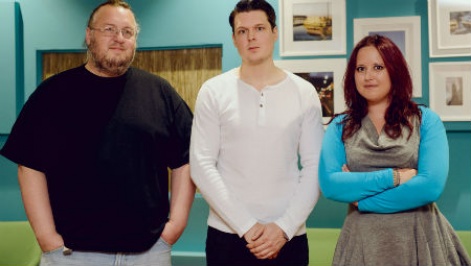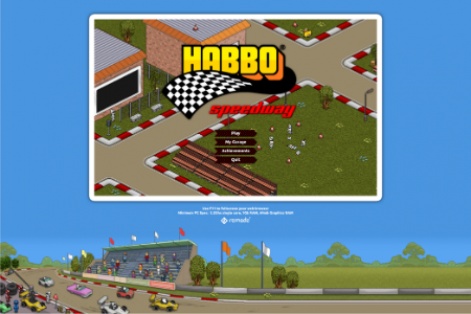For some, the prospect of work-for-hire can seem bleak, offering much less reward than own IP.
But while making games for other people does not come with the potential pots of gold that a bestselling own IP title does, it does provide steady employment for a lot of UK studios and can prepare you for future own IP projects.
For myself and fellow graduate Martin Darby setting up Remode Studios in late 2007, work-for-hire was the logical choice as we were just out of university with no industry or commercial experience, and needed to bring in revenue to build our business.
Remode grew to a 20-person studio, creating games for a wide variety of clients.
But driven by the ambition to build our own games, Martin and I made the difficult decision to close Remode in early 2014 and pursue a new, own IP project under a new studio Strike Gamelabs.
Many of the things we learned from work-for-hire projects, however, are relevant to developing our own games and have put us in a strong position with our new venture.
The business of business
I learned a huge amount from Remode and probably the steepest part of the learning curve was the day-to-day running of the business.
Managing so many different things that are all business related, such as cash flow, payroll, PR and marketing is a lot to take in, but are all essential skills as a small business.

In time, I found that most of my time was taken up with two roles: personnel management and business development (in which I include sales and PR).
Personnel management requires a lot of your time with a team of 20 people. Learning what skillsets and types of people you require for what job, and the type of team to best produce the project at hand is essential.
Learning how people work is also a factor and only really comes from experience.
Everyone works differently, and you can’t just employ people who think and work like you do. Not only would it be impossible to find them, you would have a very boring and uncreative team if everyone was the same.
You need to get to know your staff in order to get the best out of them, but more importantly you need to learn, as a manager, how to work with and lead people who learn and work differently from you.
Once you have a client, one of the biggest tricks is managing expectations.
Business development is key to any work-for-hire business. You constantly need more work, which hopefully comes from repeat clients and word-of-mouth, as well as new clients that you need to go out and find.
In broad terms, this is about knowing the right people and expanding that business network wherever you can. This means a presence at most games conferences and lots of PR (such as writing articles!), so people get to know you, your studio and your projects.
Even now, I employ a third party company not only to save time, but also to ensure my articles and proposals are as good as they can be before I submit them.
How to manage external stakeholders
An essential part of any work-for-hire studio is talking with clients. The key is to be able to communicate your idea, manage expectations and handle feedback.
Once you have a client, one of the biggest tricks is managing expectations. Being clear about what you are promising and not making assumptions is crucial.

A good working relationship between yourselves and your client is essential and a misunderstanding early on can lead to much bigger problems later. Clear documentation, making viable promises, and open channels of communication will go a long way towards keeping a project on track and both sides will be able to see clearly the direction the game is taking.
Taking feedback is one of the most important things I've had to learn through work-for-hire. Whatever project you are working on, you have stakeholders who all have different backgrounds, different agendas with the game, and different knowledge base or skills.
When you first start out, it is very hard to avoid taking critical feedback to heart. Learning to take a step back and not take it personally is something that comes through experience, and even then, it's sometimes difficult not to get frustrated.
It is very hard to avoid taking critical feedback to heart.
The main thing to keep in mind with feedback though is that it’s often being given in the form of a suggested solution or change. What you need to do, however, is find the original problem that has triggered the person to propose that solution or change.
Often requested changes will seem pointless or arbitrary when first provided, but if you can dig down to the problem, you can usually either explain why it is not a problem and remove the need for the change requested, or find a solution that still addresses the problem, but that you feel will work better.
Overall, the key to producing work-for-hire games properly is great communication, working closely with your client to ensure they are getting the game they want and that will meet their goals, whilst retaining as much creative independence as possible and making sure that they are happy with your progress.
Designing and making games
At Remode, we made many games. Most of them were fairly small, with timescales of 2-6 months.
However, having gone through the process on about 40 games, this gave us the time to refine what we did, and learn what to watch out for, how to pre-empt issues, spot common pitfalls that could occur, and what easy wins we could use; all of which make for more efficient development processes and better games.

The emphasis here is working within a budget to tight deadlines whilst making the project as profitable as possible. This was a constant challenge and we have never been able to say ‘it’s done when it’s done’.
The creation of a number of processes to better manage budget and time was essential, to reduce risk and unknowns, and enable us to estimate time and cost more effectively upfront. This task becomes even more demanding when balancing effective budgeting and scheduling with enough time for the creative process and making a fun game, in particular allowing time for iteration and polish.
What you do learn from repeating this process is how to boil a game down to its essential features; what you can design upfront in a game design document and what needs defining as you iterate through development.
Conclusion
I learned so much at Remode that it’s impossible to get it all into one article.
But what really matters is that pretty much everything I learned doing work-for-hire games is also relevant to developing our own games.
There are some extra things we need to learn, the most notable of which is the marketing and PR of our games direct to our audience, as well as having a totally open brief, which sounds wonderful but actually after years of working within boundaries is a completely new challenge for us.
However, having come straight from university to set up a company in 2007, I am really glad that we started out the way we did, and were able to grow our skills and experience through lower risk work-for-hire, as this has put us in a much better position to branch out and take the risk on our own games.
Ella Romanos is a consultant on commercial development, design and production for games, and commercial director of Strike Gamelabs.
You can find out more about Ella via her website and Twitter, and also check out what Strike Gamelabs gets up to via its website and Twitter.






















